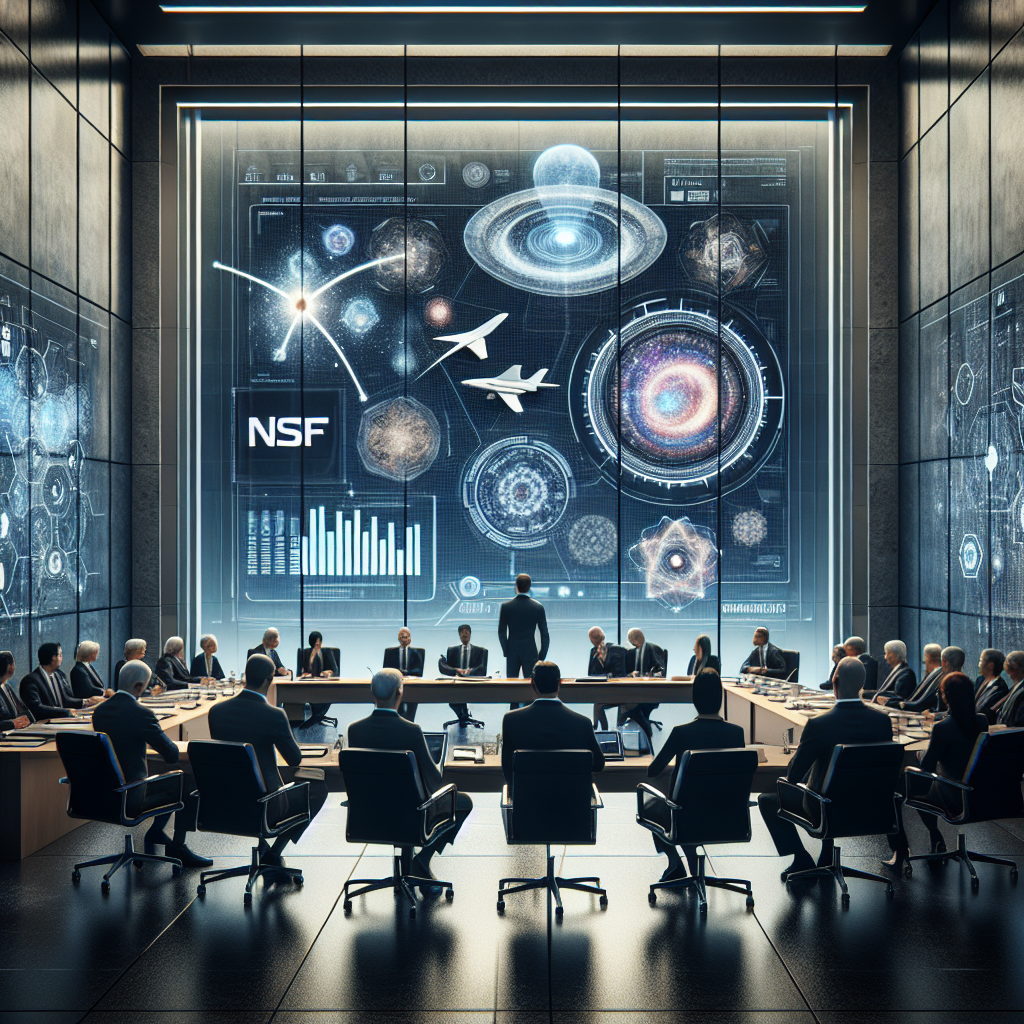
National Science Foundation’s Interagency Meeting on Disruptive Technology
The National Science Foundation (NSF) recently hosted an interagency meeting focused on advancing disruptive technology and addressing challenges posed by unidentified anomalous phenomena (UAP). The meeting, held on November 4, 2024, gathered over 120 experts exploring various innovative fields and technologies.
Exploring the Future of Tech and UAP
The purpose of this essential assembly was to exchange information that will propel the development of cutting-edge technology within the U.S. government. Emphasis was placed on understanding and tackling the complexities of pushing technological boundaries while considering the cryptic yet pressing issue of unidentified aerial objects, a topic that has intrigued scientists and national security experts for decades.
The discussions also aligned with the U.S. National Low Earth Orbit (LEO) Research and Development Strategy, which seeks to establish policies and partnerships pertinent to the use and security of low-earth orbit environments. Attendees ranged from experts in space economy and advanced manufacturing to specialists in human systems, biological sciences, bioengineering, and agriculture.
Key Contributions and Insights
The meeting was chaired by Anna Brady-Estevez, National Program Director at the NSF. With a Ph.D. in Chemical and Environmental Engineering from Yale University, she has been instrumental in pioneering disruptive and edge science research. Attendees were treated to insightful discussions on potential advancements in biomaterials, semiconductors, and retina development, with notable lectures led by prominent figures such as:
- Nicole Wagner, PhD: President and CEO of LambdaVision, highlighting the impact of space and microgravity on advanced materials.
- Charles Chase: Co-Founder of UnLAB, discussing disruptive technologies that could lead to a prosperous future.
- Hal Puthoff: President & CEO at the Institute for Advanced Studies at Austin, offering insights into the historical and technological evolution of UAP studies.
Concurrent presentations delved into sky-bound research, extending electrodynamics, tissue multiplexed staining, and the implications of UAP phenomena within biological research—mainly addressed by prominent academicians like Mike Fiddy and Garry Nolan, Ph.D.
Staying Ahead in Edge Science and Technology
Amid global tensions, particularly with nations like China and Russia, the United States recognizes the importance of remaining ahead in frontier scientific research and technology developments. The idea is to secure technological dominance and maintain national security by investing in fields such as artificial intelligence, quantum computing, aerospace engineering, and defense technologies. Former industry leaders like Charles Chase advocate for using disruptive technologies as a means to reduce conflict and enhance prosperity.
The Role of Policy
Effective government policy is critical to steering the evolution of edge science. Former UAPTF director Jay Stratton emphasized that investment in frontier science should be prioritized to secure economic growth and maintain a competitive edge. The concern is that without forethoughtful policies, advancements could be monopolized by foreign adversaries, placing the U.S. at a disadvantage in global technological and economic spheres.
Funding Breakthrough Science
Consistent, dedicated funding is necessary to propel edge science and technology forward. Julia Mossbridge, Ph.D., highlighted the significance of establishing foundations that support both mainstream and advanced scientific research, such as the Bial Foundation in Portugal. Echoing this, Dr. Chance Glenn emphasized the need for stable financial support to ensure the U.S. remains a global leader in science and technology development.
Conclusion
The meeting, described by participants like Ryan Graves as a crucial convergence of “70% edge and deep technology and 30% UAP,” is expected to lead to further promising developments. As global powers prepare for a tech-driven future, more meetings and summits dedicated to exploring frontier science and technology are slated for the near future.
Chrissy Newton, the author of this insightful coverage, is a PR professional and founder of VOCAB Communications. She continues to engage audiences through various platforms, including The Discovery Channel and the Rebelliously Curious podcast, all while highlighting the importance of innovation and discovery within scientific fields.
Source: https://thedebrief.org/national-science-foundation-hosts-interagency-meeting-on-disruptive-technology-with-uap-in-focus/

